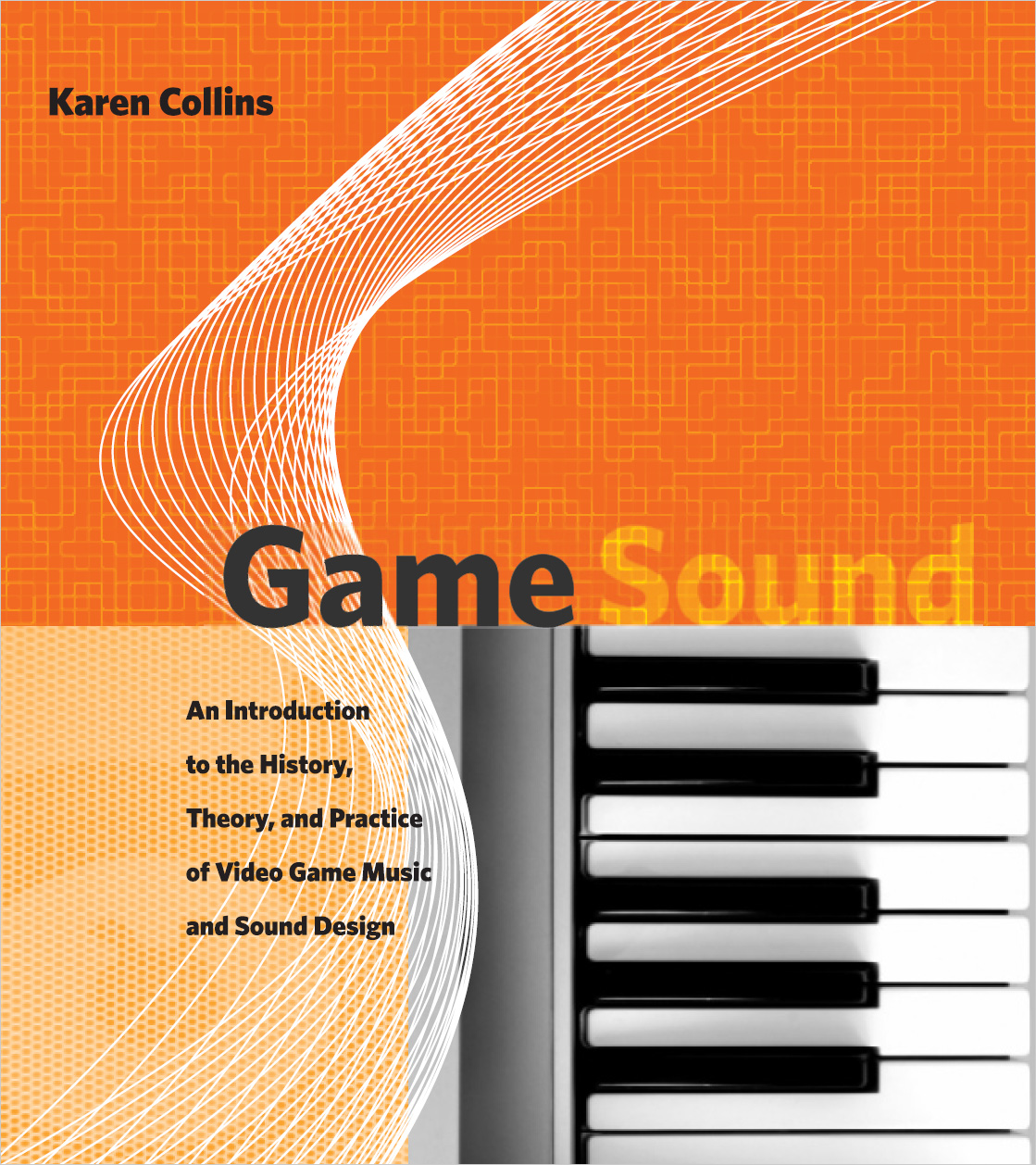FIT CTU
Adam Vesecký
vesecky.adam@gmail.com
Lecture 6
Audio
Architecture of Computer Games
Digital Sound
PCM
- pulse-code modulation, a method used to digitally represent sampled analog signals
- sample - fundamental unit, representing the amplitude of an audio signal in time
- bit depth - each bit of resolution is equal to 6dB of dynamic range
- sample rate - number of samples per second: 8 kHz, 22.05 kHz, 44.1 kHz, 48 kHz
- frequency - a measure of the number of pulses in a given space of time
- frame - collection of samples, one for each output (e.g. 2 for stereo)
- buffer - collection of frames in memory, typically 64-4096 samples per buffer
- the greater the buffer, the greater the latency, but less strain being placed on the cpu
Bit depth and sample rate
Sound formats
Time Domain formats
- better for random access
- sound samples and effects
- PCM, WAV, FLAC
Frequency Domain formats
- better for compression
- music and voices
- MP3, OGG Vorbis
Synth formats
- contain notes, effects,...
- old trackers: MOD, S3M, XM, IT
- MIDI for streaming (e.g. from electronic piano)
- proprietary formats of various audio editors
- mostly used for pre-production
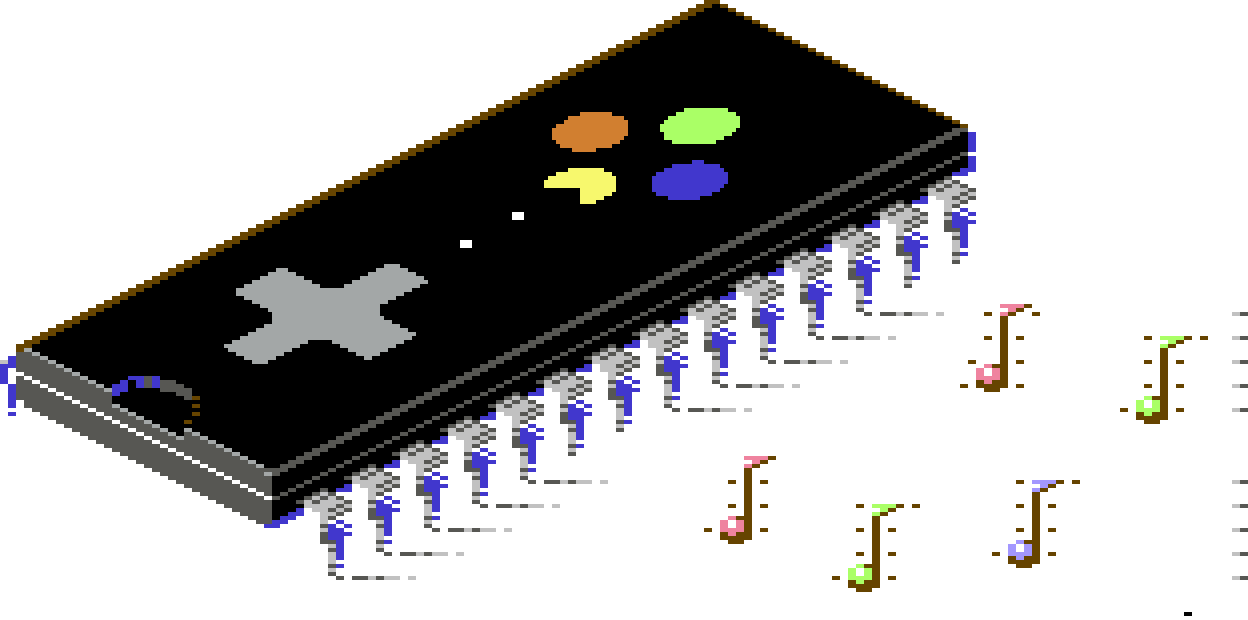
Sound formats
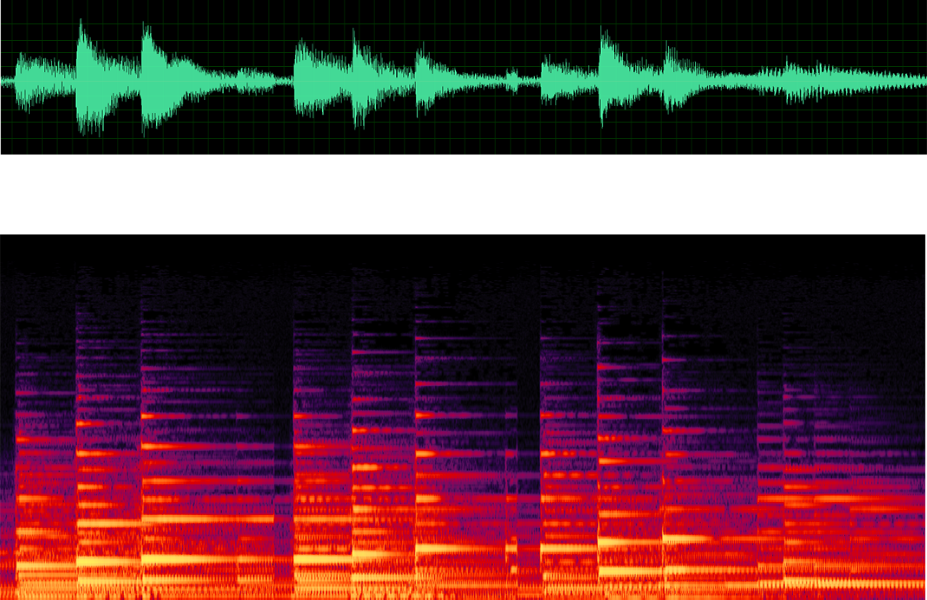
History of digital sound
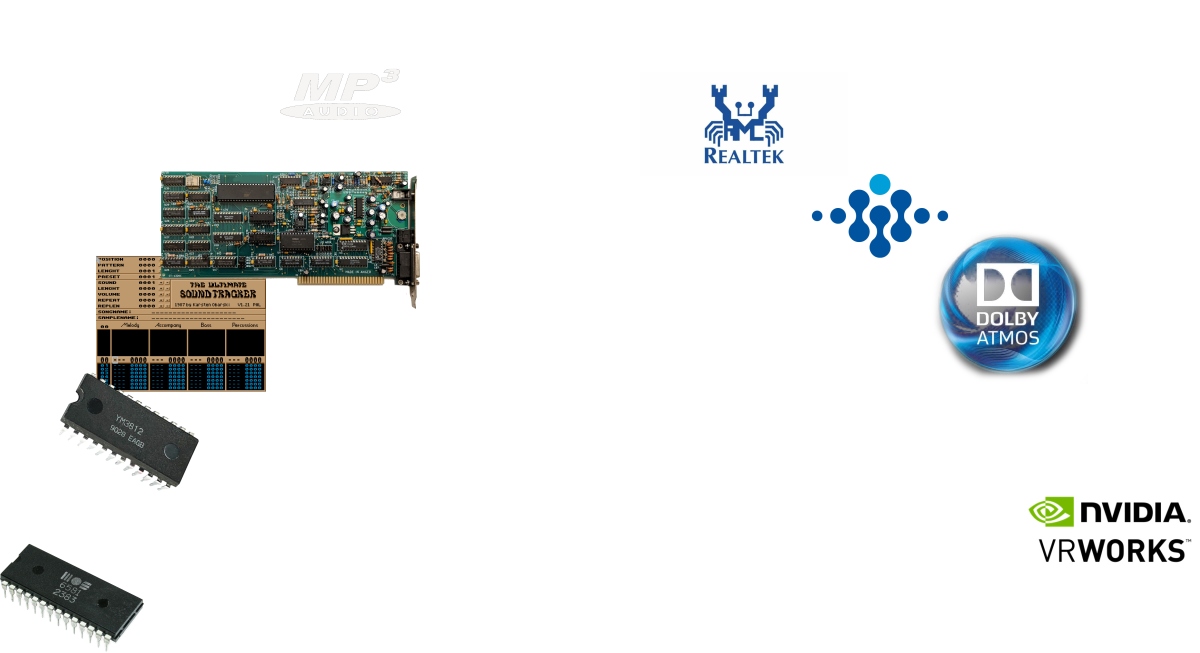
History of digital sound
- before 1980 - simple programmable sound generators
- 1981 - Commodore MOS 6581, rise of demoscene
- 1985 - Yamaha YM3812 (OPL2), FM synth widely used in DOS games
- 1987 - Amiga Ultimate Soundtracker, rise of trackers
- 1989 - Sound Blaster 1.0 - IBM PC gets PCM sounds
- 1992 - Gravis Ultrasound - boosted MIDI music with wavetables
- 1996 - DirectSound - rise (and fall) of hardware-accelerated sound in games
- 1996 - VST plugins - pushed limits of synthetic music
- 1997 - Realtek ALC5611 - rise of on-board chips for audio
- 1998 - Sound Blaster Live! - Creative Labs takes the lead (for the last time)
- 2004 - High Definition Audio - new specification for PC audio
- 2005 - sound processing goes back to software (thanks to multicore CPUs)
- 2012 - Dolby Atmos - technology for 3D sound
- 2017 - NVidia VRWorks, rise of GPU-powered sound processing
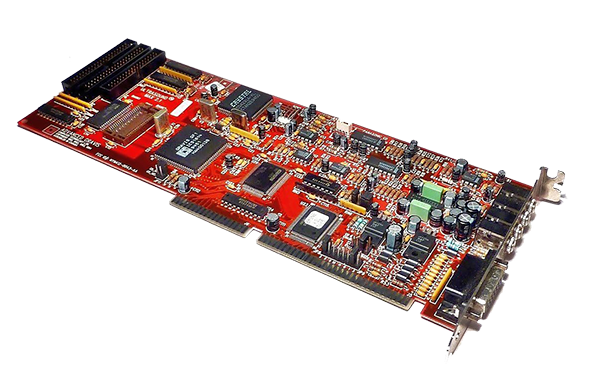
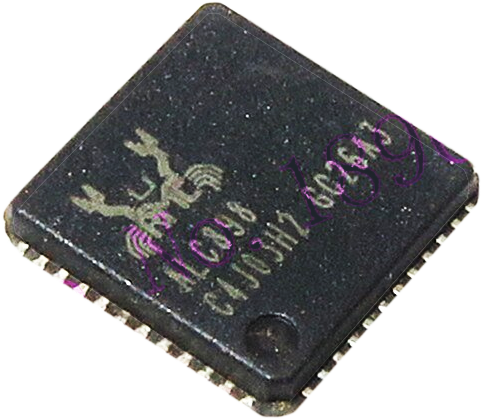
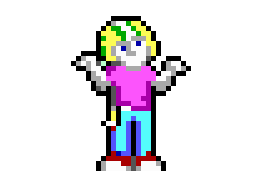
Sound synthesizing, recording and composing
Sound generators
- generator - oscillator that can make a tone, either independently or by pairing with another generator
- synth music is a combination of generated tones, effects, filters, and recorded sound samples
- main synthesis types: additive, subtractive, FM, wavetable
ADSR Envelope
- envelope describes a change of a sound over time
- attack - time it takes for the sound to go from silent to the loudest level
- decay - how long it takes for the sound to go from the initial peak to the steady state
- sustain - steady state at its maximum intensity (until the source stops)
- release - time it takes for the sound to return to silence (fade out)
Additive Synthesis
- creates waveforms with only specific harmonics
- best for organs and bell sounds
Circuit abbreviations
- VCA - amplifier
- VCO - oscillator
- VCF - filter
- EG - envelope generator
- LFO - low frequency oscillator, used for vibrato, tremolo etc.
Subtractive Synthesis
- starts with a sound that is rich in harmonics and applies filters to attenuate or subtract frequencies
- filters control cut-off frequency and resonance
- sound is warm and organic
- dry signal - original sound
- wet signal - processed sound (reflections, reverberations)
FM Synthesis
- gets a clean tone and uses operators to modulate the pitch of the oscillator
- consists of an array of operators
- each FM sound needs two generators - carrier and modulator
- carrier - tones you hear
- modulator - tones that vibrate the carriers
- cold, alien-like sound
Wavetable Synthesis
- wavetable - a collection of wave shapes in a single oscillator, usually 50ms of length
- realistic but requires more RAM
- can generate complex sound
Effects
- Echo - delayed signals of 50ms or more
- Reverberation (Reverb) - reflection of sound waves off a solid surface, used for in-door environments
- Chorus - delayed sound added to original with constant delay, adds depth
- Time stretching - altering the speed without adjusting the pitch
- Compressor - reduces the dynamic range of a sound, make loud sounds quieter and quite louder
- Equalization - attenuating or amplifying various frequency bands
- Filtering - specific frequency ranges can be emphasized or attenuated
- Lowpass/highpass - filter that cuts off high or low frequencies
- Portamento - gradually increases pitch
- Vibrato - a regular, pulsating change of pitch
- Tremolo - variation in amplitude (volume)
- Panning - changing the volume for respective channels
MOS Technology - SID
- SID (Sound Interface Device) - built-in programmable sound generator
- subtractive synthesizer, invented in 1981 for Commodore C64
- one of the first sound chips of its kind
- ADSR, 3 programmable audio oscillators, 4 waveforms (sawtooth, triangle, pulse, noise)
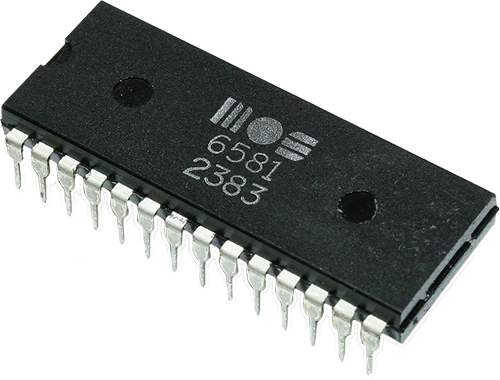
Other HW-based synthesizers
Atari 800XL
- POKEY chip
- 4 semi-independent audio channels
IBM PC Speaker
- 1-bit on-board generator, square waves
Nintendo Entertainment System
- 2 pulse waves, triangle, noise and PCM audio
Yamaha YM3812
- sound chip created by Yamaha in 1985, used in IBM PC sound cards
- 9 channels of sound, each made of 2 oscillators
Game boy Advance
- 4 sound channels (square, wave, wave table, noise) + 2 DAC channels
- PCM samples, 32 kHz sampling
Trackers
- set of tools for wavetable synthesis
- demoscene and cracktro makers heavily used trackers for their soundtracks
- each channel has a vertical lane, with the vertical axis representing time
- songs are constructed from patterns, each pattern has a set of notes, played by instruments
- notes are generated from samples
- 1987 - Ultimate SoundTracker for Amiga, *.MOD file format
- 1994 - Scream Tracker for MS-DOS, *.S3M file format
- 1994 - Fast Tracker 2 for MS-DOS, *.XM file format
- 1995 - Impulse Tracker for MS-DOS, *.IT file format
- http://modarchive.org/ - archive of MOD files
- trackers used nowadays: SunVox, OpenMPT, Renoise
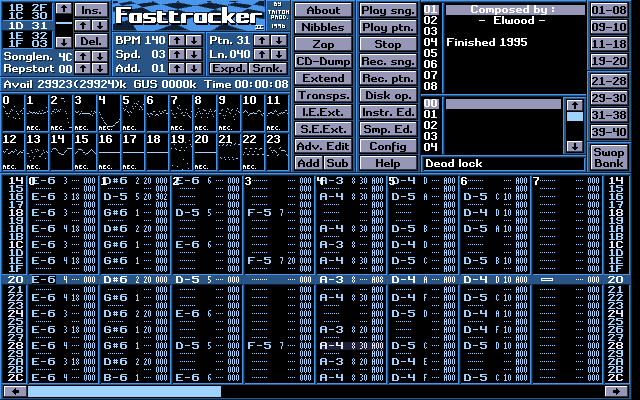
Fast Tracker 2
Example: Sunvox
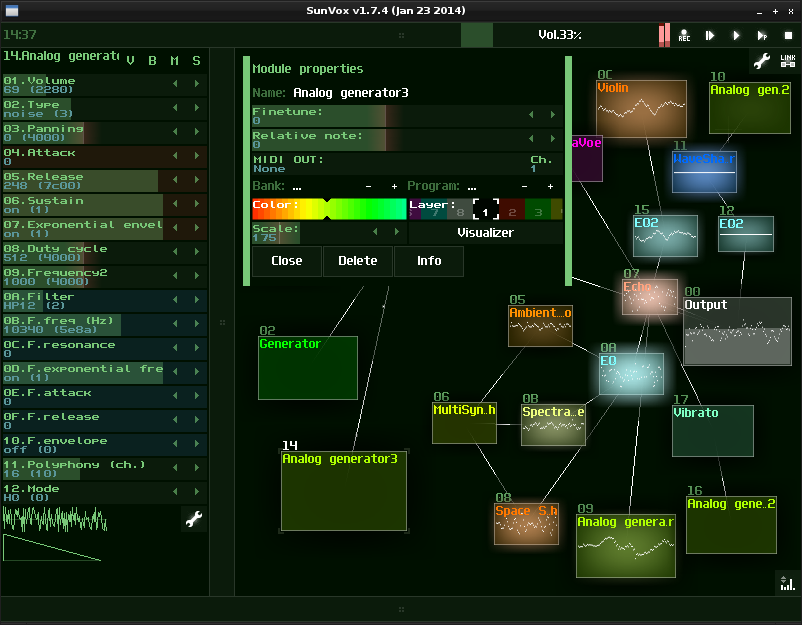
MIDI
- streaming protocol, introduced in 1982
- enables different manufacturers to trigger events by sending messages on a serial connection
- midi is not audio but it can control audio
- General MIDI - a way of ensuring that every device has the exact same basic sounds
- MIDI doesn't contain samples, only notes and commands, thus it requires sound fonts
- MIDI sounds different when played on different SW/HW (big issue in 1990's)
- old game soundtracks can be played at high quality by using good sound fonts (FluidSynth)
VST plugins
- Visual Studio Technology
- interface for digital audio processing
- can be integrated in almost every DAW (digital audio workstation)
- can simulate basically everything - used as effects, converters, filters, virtual instruments,...
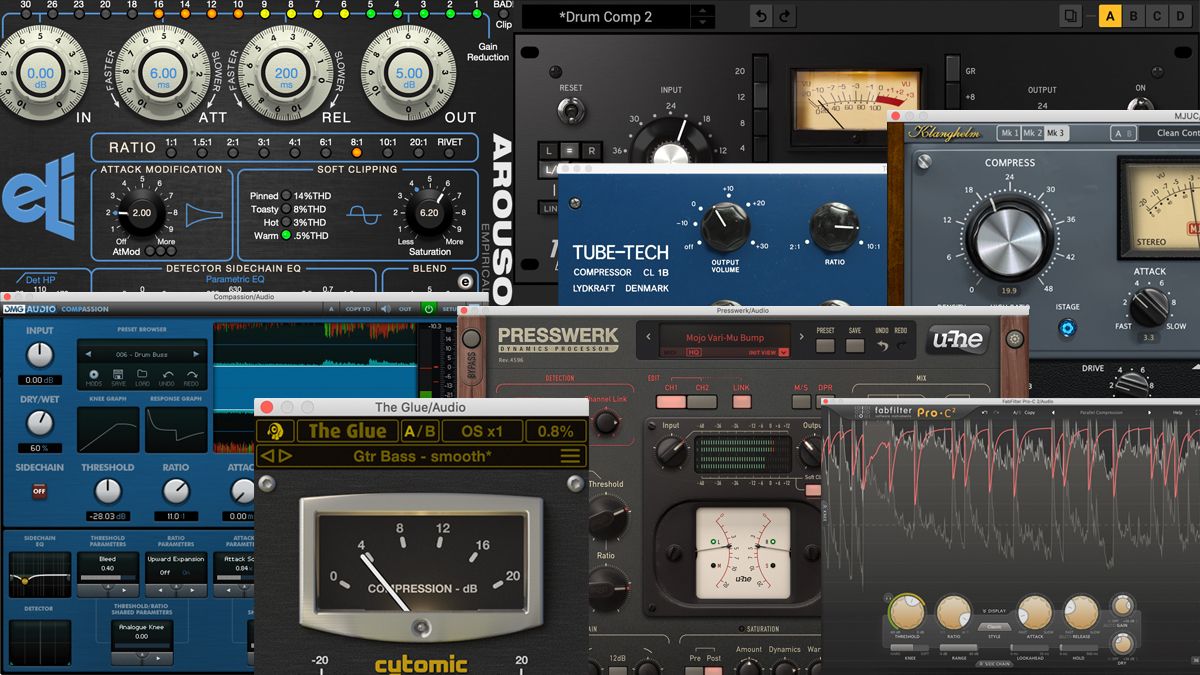
Sound recording
- ambient sounds - directly in the environment, using a good quality microphone
- synthetic sound effects - DAW software (FLStudio, Audacity,...) and a set of VLC plugins
- real sound effects - by foley artists
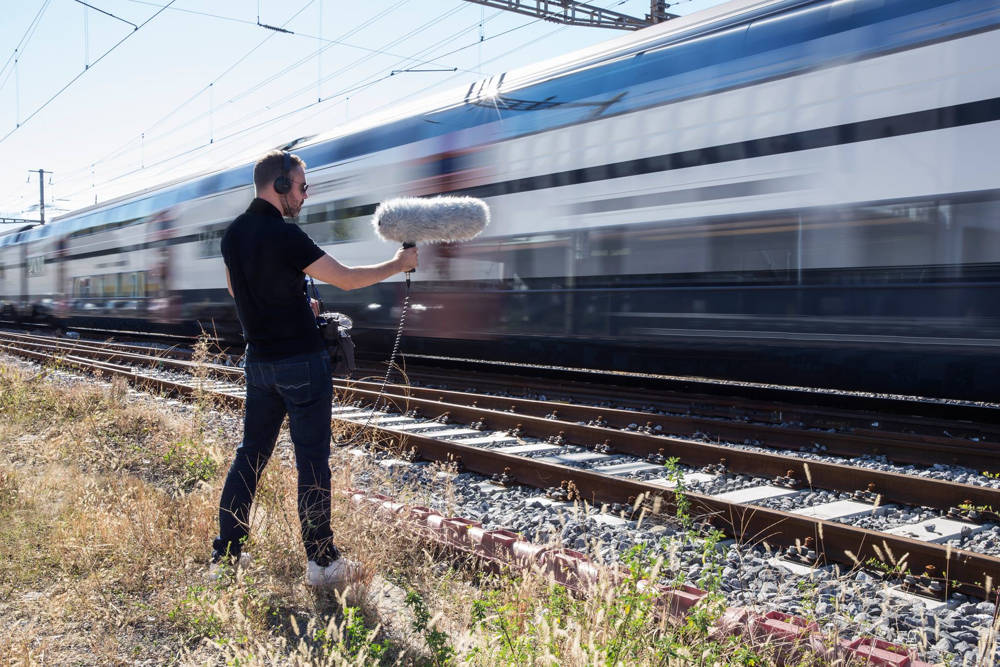
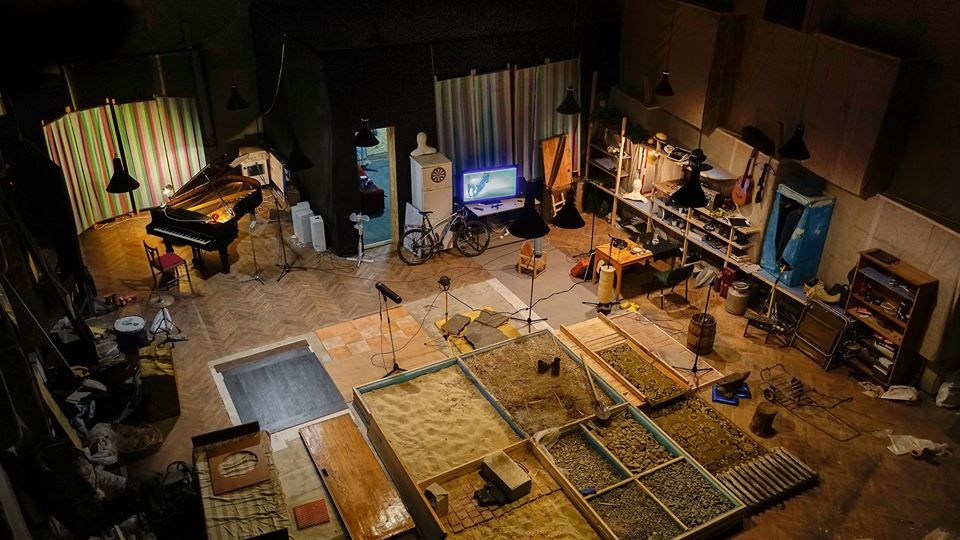
Music composing
- either real orchestra, synth music or combination of both
- many composing techniques: chords-first, melody-first, structure-first
Scales
- major scale - happy scale
- minor scale - sad scale (natural, harmonic, melodic)
Keys
- most songs are in a Key
- key is a specific group of pitches that follow a scale
- melody shaping - moving away from the starting note and back
Bassline
- bottom notes of chords
- we can build chords from basslines
- e.g. CGFA basslines gives chords CEG, GBD, FAC, ACE
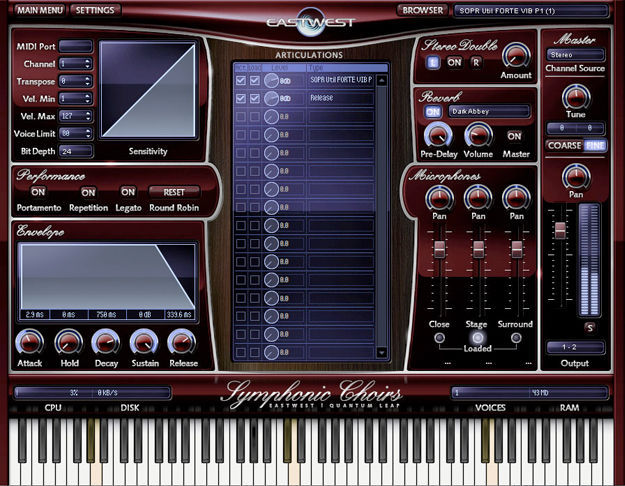
EastWest Symphonic Orchestra
Music in games
Music in games
Genre
- chiptune (pixel-art)
- electronic music (arcades, shoot-em-ups)
- instrumental music (games with a story)
Presentation
- character-based - focuses on characters (usually narrative games)
- environment-based - games with diverse locations
- emotional-based - games with strong story, music invokes feelings
Usage
- to reflect the game state
- to reflect the environment
- to reflect the story
- to alert the player about an event
Music in games
Monkey Island 2: LeChuck's Revenge (1991)
- iMUSE engine for smooth transitions between locations
The Legend of Zelda: Ocarina of Time (1998)
- important role of musical themes (e.g. Saria's Theme)
F.E.A.R (2005)
- reactive music tailored to each individual event
League of Legends (2009)
- looping score and many in-game alerts
Mass Effect 3 (2012)
- epic emotional soundtrack
Hellblade: Senua's Sacrifice (2017)
- uses binaural audio to create a horrifying experience
Music as the core mechanic
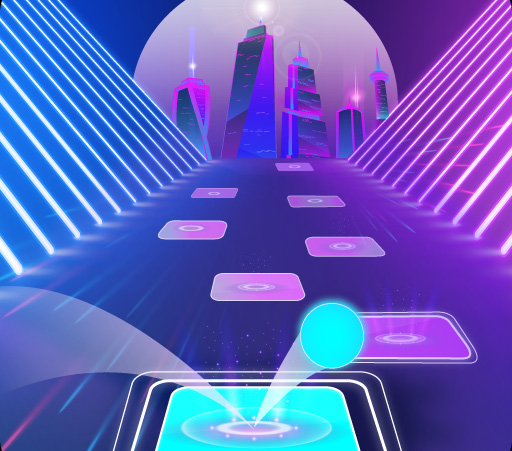
Tiles Hop
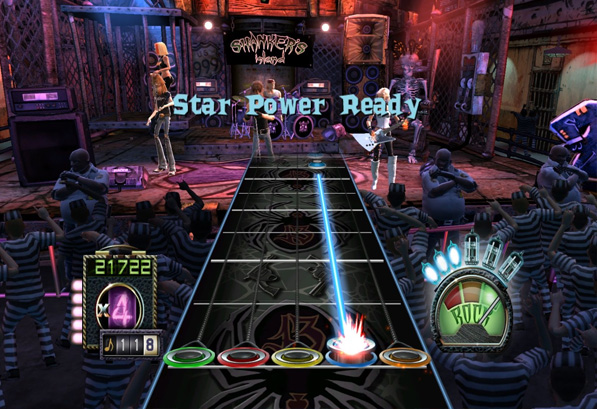
Guitar Hero

Dance Dance Revolution
Music in games
Assets
- sound cues - collection of audio clips with metadata
- sound banks - package of sound clips and cues (e.g. all voices of one person)
Asset categories
- diegetic - visible (character voices, sounds of objects, footsteps)
- non-diegetic sound - invisible (sountrack, narrator)
- background music - ambient music (e.g. river)
- score - soundtrack, is clearly recognizable
- interface music - button press
- custom music (e.g. GTA radio)
- alert - music triggered by an event
Dynamics
- linear audio - only reflects major changes (e.g. finished level)
- dynamic audio - changes in response to changes in the environment or gameplay
- adaptive audio - responses to the gameplay, adapts itself based on game attributes
Example: Linear audio
Doom 2
Prince of Persia 2: Shadow and the flame
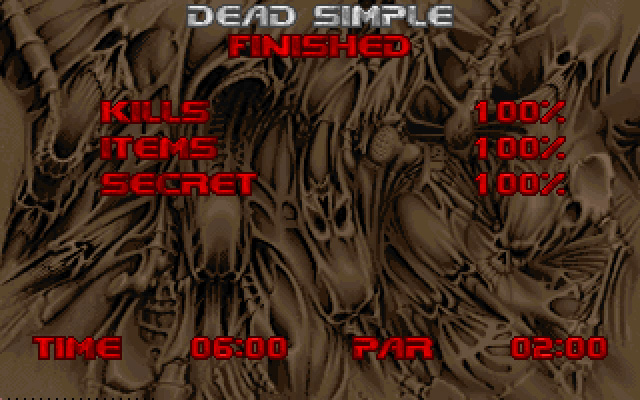
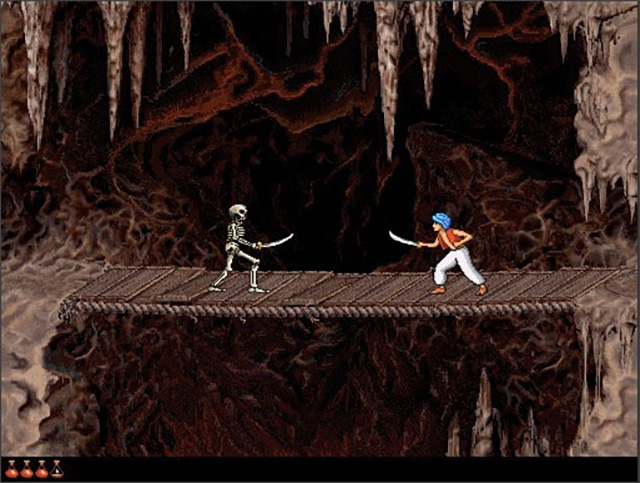
Dynamic music
Features
- looping - going around and around
- branching - conditional music
- layering - some pieces can be muted on and off and re-combined
- transitions - moving smoothly from one cue to another
Looping
- experienced players will detect the looping point!
- we need to find out how much time the player spends during each session - gameplay time
- the length of the music should extend the gameplay time to avoid repetition
- you don't know how long the player will stay there
- you don't know if the player moves fast or slow
- 2 repetitions are acceptable, 5 and more are annoying
Looping solutions
Looped composition
- beginning and end are seamlessly connected
- challenge - making the loop pleasing to the ear for longer periods
Switching keys
- we may play the melody in a different key
- enhancing the familiarity without repeating it exactly as before
Divided song
- divide the song into parts, loop only certain parts, don't start at the beginning
- lower feeling of repetition
Looping solutions
Mute the melody
- you can increase the number of loops while muting the melody
- the music can lose impact
Silence
- no undesirable effects
- reintroduction of the music may become annoying
Layered patterns
- divide the song into layers and introduce looping separately for each
- greater diversity
- may result in undesirable melodies
Transitions
- moving from one cue to another one
- never stop anything instantly, it may disrupt the gameplay experience
Cross-fade
- simple solution, one song fades out and another one fades in
- not very good for instrumental music
Transition cue
- every song has a separate transition cue
Transition points
- every song has several points at which the transition may happen
- difficult to implement
iMUSE
- dynamic audio for SCUMM engine
- developed by LucasArts in 1991
- database of musical sequences contained decision points within the tracks
- the segments could change, be enabled or disabled, loop, converge, branch, jump etc.
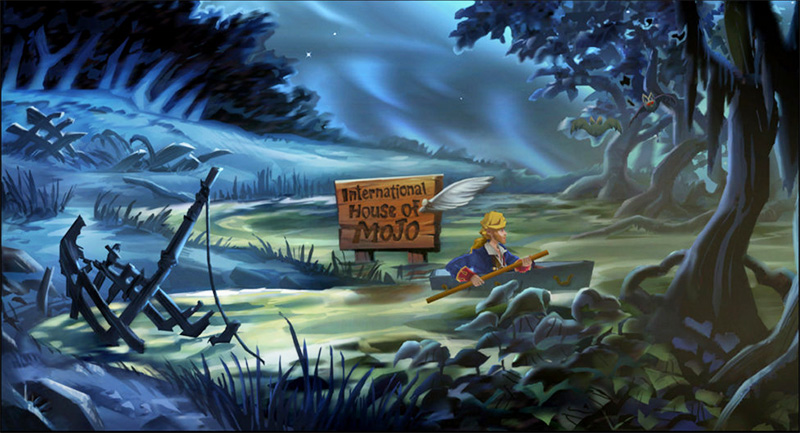
Monkey Island 2
Disruptive audio
- bad mood
- bad looping
- bad transitions
- bad mixing (e.g. ambient sound that superimposes a dialog)
- repetitive NPC voices
- little variation (same music for different levels, one sound for footsteps, explosions etc.)
- false alarm
- too many sounds playing at the same time
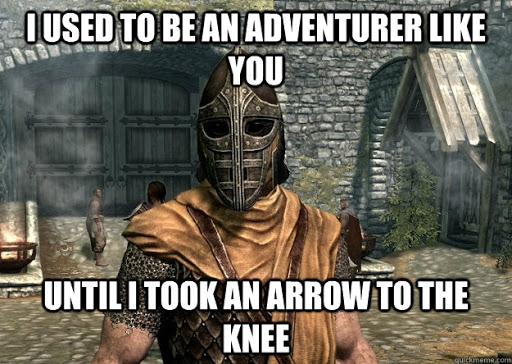


Adaptive music
- dynamic music reflects changes in the gameplay, but still follows pre-scripted patterns
- adaptive music is more diverse, it supports emergent gameplay
Variability options
- variable tempo
- variable pitch
- variable rhythm
- variable volume
- variable DSP/timbres
- variable melodies
- variable harmony (chordal arrangements)
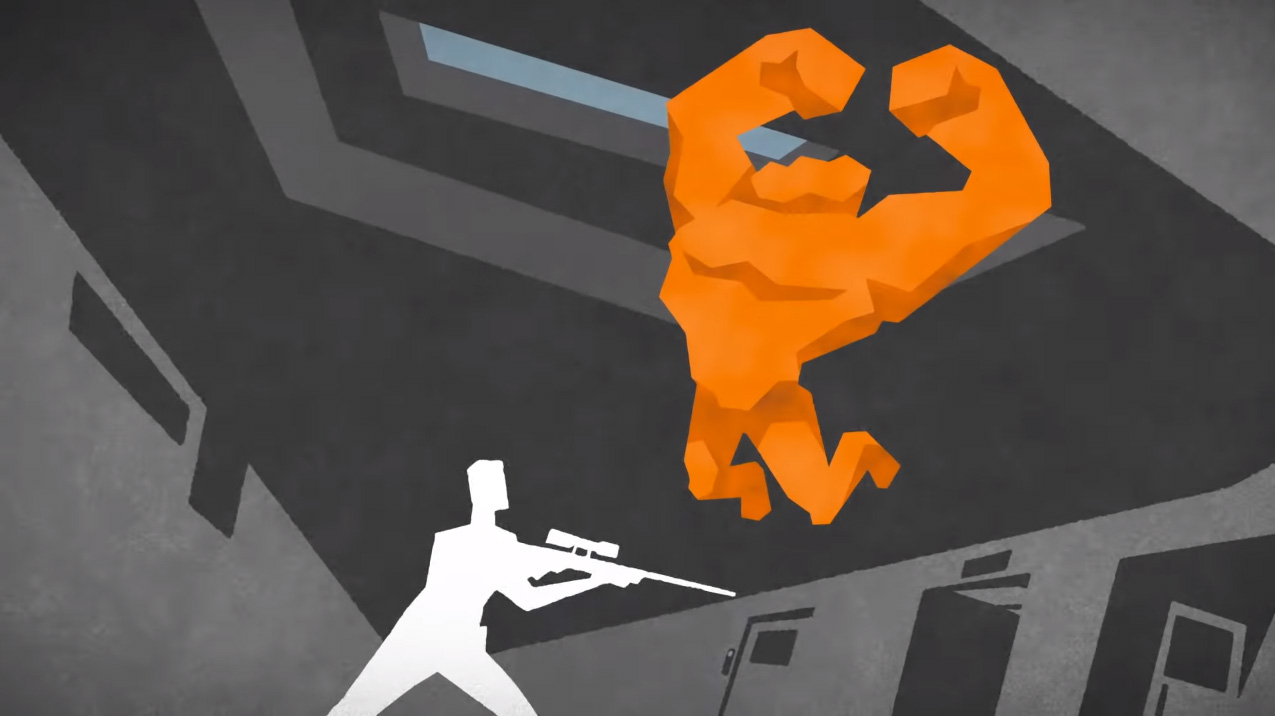
Ape Out (2019) - reactive music system
Sounds in games
Sound effects
- the illusion of being immersed in a 3D atmosphere is greatly enhanced by sounds
- 2D games - main focus is the music, sound effects are usually simple
- 3D games - complex positional sounds
Types
- one-shot - always the same (barks, clicks)
- buzzers - e.g. humming, sound of tube lights
- moving objects - e.g. doppler effect for cars
- random - e.g. a set of sounds for explosions
- periodic - e.g. waterfall
- dynamic - e.g. walking on various surfaces
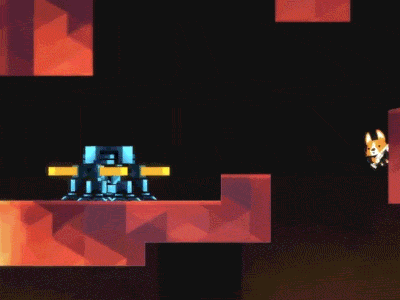
3D Sound
Attenuation
- the further the sound, the quieter it is
Occlusion
- how sound is occluded by solid objects, losing its high frequency
Obstruction
- when the direct path to a sound is muffled but not enclosed
- creates delays
3D Sound
Panning
- changing the channel based on the location of the source
HRTF
- transfer function which models sound perception with two ears to determine positions of the source
- describes how a given sound wave input is filtered by the diffraction properties of the head
- can be used to generate binaural sound
Ambisonics
- full-sphere surround sound format, covers sources
above and below the listener
Raytracing
- physically precise sound rendering, used in VRWorks
Audio APIs
Audio API
- in sharp contrast with the game loop, audio loop depends on sample rate and buffer size
- audio engines use double buffer - we are feeding one while the other is playing
- callback API - OS-level thread calls into user code when a buffer is available (e.g. CoreAudio for MacOS)
- polling API - user must periodically check if the buffer is available (e.g. Windows WASAPI)
Audio Engine
Example: Godot audio loop
| 1 | OSStatus AudioDriverCoreAudio::output_callback(...) { |
| 2 | AudioDriverCoreAudio *ad = (AudioDriverCoreAudio *)inRefCon; |
| 3 | ... |
| 4 | for (unsigned int i = 0; i < ioData->mNumberBuffers; i++) { |
| 5 | AudioBuffer *abuf = &ioData->mBuffers[i]; |
| 6 | unsigned int frames_left = inNumberFrames; |
| 7 | int16_t *out = (int16_t *)abuf->mData; |
| 8 | |
| 9 | while (frames_left) { |
| 10 | unsigned int frames = MIN(frames_left, ad->buffer_frames); |
| 11 | ad->audio_server_process(frames, ad->samples_in.ptrw()); |
| 12 | |
| 13 | for (unsigned int j = 0; j < frames * ad->channels; j++) { |
| 14 | out[j] = ad->samples_in[j] >> 16; |
| 15 | } |
| 16 | |
| 17 | frames_left -= frames; |
| 18 | out += frames * ad->channels; |
| 19 | }; |
| 20 | }; |
| 21 | ... |
| 22 | return 0; |
| 23 | }; |
Audio Engines
- FMOD Engine - integrated in Unity (via plugin) and Unreal
- WebAudio API - node-based API for sound processing in web browsers
- RealSpace 3D Audio - pin-point accurate engine, supported by Unreal
- VRWorks - raytraced sound rendering by NVidia
- Audiokinetic Wwise - feature-rich interactive engine
- Windows Sonic - HRTF-based spatialization for Windows and HoloLens
- Project Acoustics - complete auralization system, combines HRTF with Project Triton engine
Audio engine pipeline
VRWorks
- path-traced geometric audio from NVidia
- based on Acoustic Raytracer Technology
- uses GPU to compute acoustic environmental model
- supported by Unreal Engine
WebAudio API
- high-level JavaScript API for audio processing
- features: modular routing, spatialized audio, convolution engine, biquad filters,...
- spatialized audio (distance attenuation, sound cones, obstruction, panning models)
- convolution engine (cathedral, cave, tunnel)
- audio operations are performed with audio nodes that are linked together
Node setup example
Lecture Summary
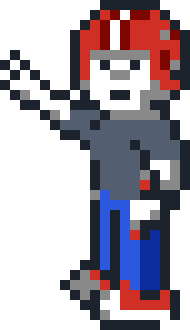
- I know what PCM is and how buffer size affects the gameplay
- I know 4 basic types of synthesis
- I know basic waveforms of sound generators
- I know categories of audio assets in games
- I know features of dynamic music (looping, branching, layering, transitions)
- I know what attenuation, occlusion and obstruction in 3D sound are
Goodbye Quote
He who controls the past commands the future. He who commands the future conquers the past.Kane, C&C Red Alert
